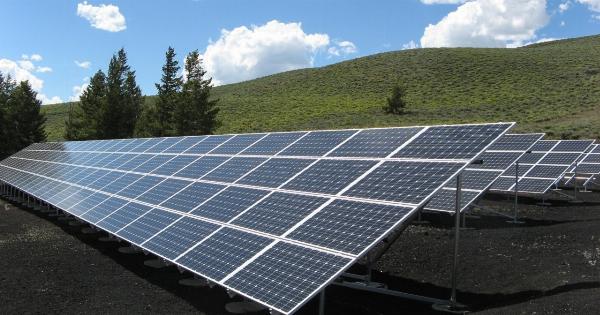Oncology care is one of the most rapidly developing fields in medicine and healthcare. With advancements in technology and research, there have been significant improvements in the diagnosis, treatment, and management of cancer.
However, the use of traditional fossil fuels and transportation methods has been causing harm to the environment. To tackle this problem, we need to turn towards sustainable and eco-friendly alternatives. Biomassives and green transportation are two such alternatives that can revolutionize oncology care, making it environmentally responsible.
What are Biomassives?
Biomassives, also known as natural biostimulants or biologically based inputs, are substances that can enhance plant growth and improve the yield of crops.
They are made by extracting organic materials such as plant extracts, seaweed, and animal waste, that are rich in essential nutrients and other bioactive compounds. Biomassives can help mitigate the negative impact of traditional farming methods on the environment. They can facilitate improved soil structure, water retention and reduce environmental stress, contributing to restoring the ecological balance.
Biomassives in Oncology Care
Biomassives can play a vital role in oncology care by contributing to the development of new drugs and therapies. As plants are rich sources of secondary metabolites, these metabolites have been used as a basis for the development of new drugs.
Biomassives can help improve the efficiency of drug development by providing bioactive compounds that can be used as drug precursors. Additionally, by facilitating the growth and health of crops, biomassives can improve the nutritional value of food, which is crucial for cancer patients undergoing treatment.
This improved nutrition can help support their immune system and aid in the recovery process.
Green Transportation
Green transportation aims to reduce the carbon footprint of transport systems by using alternative energy sources such as electric and hybrid vehicles, biofuels, and carbon-neutral liquefied natural gas.
The transport of goods, including medical supplies and equipment, typically relies on the use of fossil fuels, making it one of the most significant contributors to pollution levels. The use of green transportation can, therefore, have a substantial positive impact on the environment, reducing greenhouse gas emissions and enhancing air quality.
Green Transportation in Oncology Care
Green transportation can significantly impact the oncology care sector.
By utilizing eco-friendly transport modes such as electric and hybrid vehicles, medical professionals can reduce their environmental impact while still providing high-quality patient care. This is especially crucial for oncology care, where specialized equipment and medical supplies need to be transported with care.
Furthermore, the use of green transportation can help hospitals and medical centers reduce their operational costs by decreasing fuel expenses and improving energy efficiency.
Advantages of Biomassives and Green Transportation in Oncology Care
There are several benefits of utilizing biomassives and green transportation in oncology care, including:.
- Reduced carbon footprint
- Lowered environmental impact
- Improved soil structure and plant growth
- Enhanced nutritional value of food
- Cost savings
- Improved air quality
- Reduced greenhouse gas emissions
- Improved energy efficiency
- Lowered fuel expenses
- Improved patient care
Conclusion
Biomassives and green transportation can play significant roles in transforming oncology care into a more environmentally responsible and sustainable field, contributing to the global fight against climate change and environmental degradation.
The adoption of these eco-friendly alternatives can lead to a reduction in carbon footprint, lowered environmental impact, lower operating costs, and improved patient care. By integrating these options into oncology care, we can better ensure the health of both the planet and its inhabitants.






























